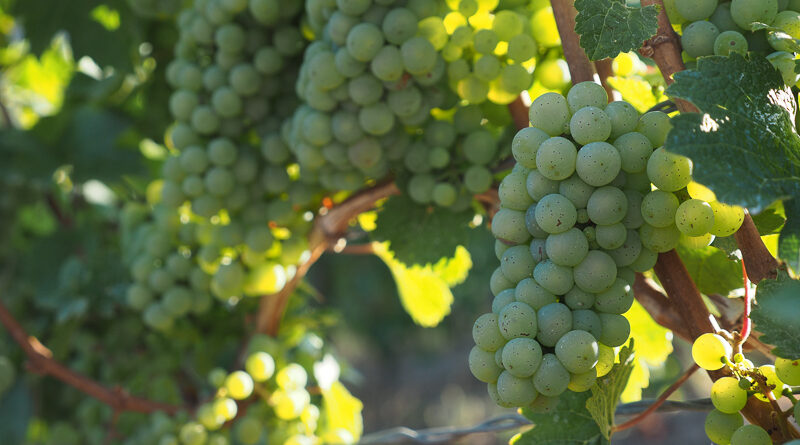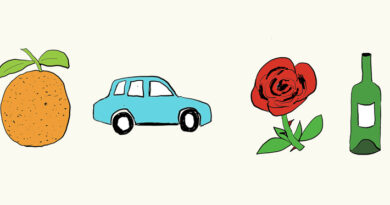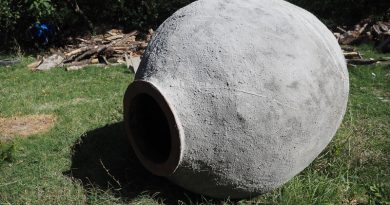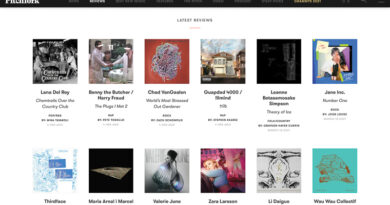Introducing TDN, a compound responsible for petrol aromas in Riesling and other white wines
If you are a Riesling fan, then there’s one wine flavour compound you’ll be well acquainted with, even if you don’t know its chemical name. It is TDN, and for some reason, Riesling has more of it than other grape varieties, although it is also found in other white wines. TDN stands for 1,1,6-trimethyl-1,2-dihydronaphthalene, and if it’s present above a certain level, it causes petrol/kerosene aromas.
Some people really dislike it and consider it to be a fault. At low levels it can be quite pleasant – again, depending on your preference – but most people find it overpowering at higher levels. Personally, I don’t like it.
TDN belongs to a group of compounds called C13-norisoprenoids. It is formed from precursors in the grapes that develop higher levels with sunlight exposure and also water stress. Riesling wines typically have both free TDN in them and also the bound precursors, with far more of the latter, and some of the bound reserve becomes free during fermentation and then ageing. But some of the free is lost, too, so there is a sort of flux with more being released as some is lost. It is thought that after a few years most wines reach a stable peak, before the levels fall once the bound reserves are used up.
The detection level is much lower than previously thought. In a study published in 2012, Gavin Sacks and colleagues from Cornell University in New York State looked at the thresholds of tasters to TDN, and also measured concentrations in a number of wines. They found the TDN concentrations were significantly higher in Riesling than in other varietal wines, at 6.4 μg/L, compared with an average of 1.3 μg/L for the other wines. Peoples’ thresholds were 2 μg/L, which is ten times lower than the previously reported odour threshold. So this meant that 27 of the 28 Riesling wines (aged 1-3 years) were over this threshold, while only 7 of the 69 wines from other varieties were over this level.
In a more recent study (2020), Tarasov and colleagues also looked at thresholds. They looked at three different sorts of threshold:
- Detection threshold: the lowest level at which a stimulus can be detected but not recognized
- Recognition threshold: it can be detected and recognized
- Rejection threshold: where the wine is rejected as faulty
In these studies, for TDN the three respective thresholds were 4, 10-12 and 71-82 μg/l.
It follows that half the population should be able to perceive TDN in most Riesling wines. However, the fruity characteristics of young wines can mask TDN, so that even if you can perceive it, you might not recognize it.
The precursors are a group of compounds present in grapes called carotenoids. There are at least a dozen of them in grapes and they fall into two categories: carotenes and xanthophylls. Levels of these compounds build up in the grapes and then after veraison they break down to form the C13-norisoprenoids. This group includes the precursors to TDN, and they undergo a chemical modification known as glycosylaytion, which involves adding a sugar. This creates a reservoir of bound compounds in the grape juice that can then release TDN during fermentation. Higher levels of caretonoids in grapes means more TDN in the wine. Then, after the wine is bottled, there is a pool of precursors in the wine that can later release TDN during ageing.
What leads to higher levels of precursors? Sun exposure and water stress. Sun exposure is the key factor: anything higher than 20% full sun exposure of the grapes raises TDN in the wine. One study from New York State, where Riesling is a key grape variety, showed that in mid-season, 33 days post berry set, there was a spike in zeaxanthin (a caretonoid) levels with sun exposure. Exposure at days 2 and 68 didn’t have the same effect. The 33 day sun exposure led to twice the TDN levels in the wine.
Once the wine is bottled, other factors can raise the level, including bottle age, storage temperature and oxidation. When the wine has higher acidity, TDN develops more quickly. Interestingly, using screwcaps can result in higher TDN levels because studies from Tarasov and colleagues have found that cork and synthetic closures scalp more than 50% of the TDN in the first two years after bottling. Even the glass stoppers absorb some because the closure here is made with a plastic ring between the stopper and the rim of the bottle.
TDN is a major concern to winemakers in Germany at the moment, because they have been experiencing warmer, drier summers. Karsten Peter, at Gut Hermannsberg in the Nahe, says they have been experimenting with different approaches to leaf plucking as a way to lower the risk of TDN, which they are very concerned about. Typically they will remove all the leaves in the fruiting zone to keep disease pressure low. Now, they do a staged leaf pluck. And they are trialling leaving some outer leaves as a sort of umbrella, but picking just the inside leaves, to create airflow but keep some shade.
Australian Riesling can often have higher levels even in young wines. Typical levels in European Rieslings would be 1-50 μg/l, but Australian Riesling can have levels as high as 250 μg/l, and sometimes even higher.
But be careful that you don’t mistake the aromas of older Riesling for TDN. German wine expert Anne Krebiehl says that in her experience many tasters smell mature Rieslings and label the aromas as ‘petrol’ even if there is no TDN.




